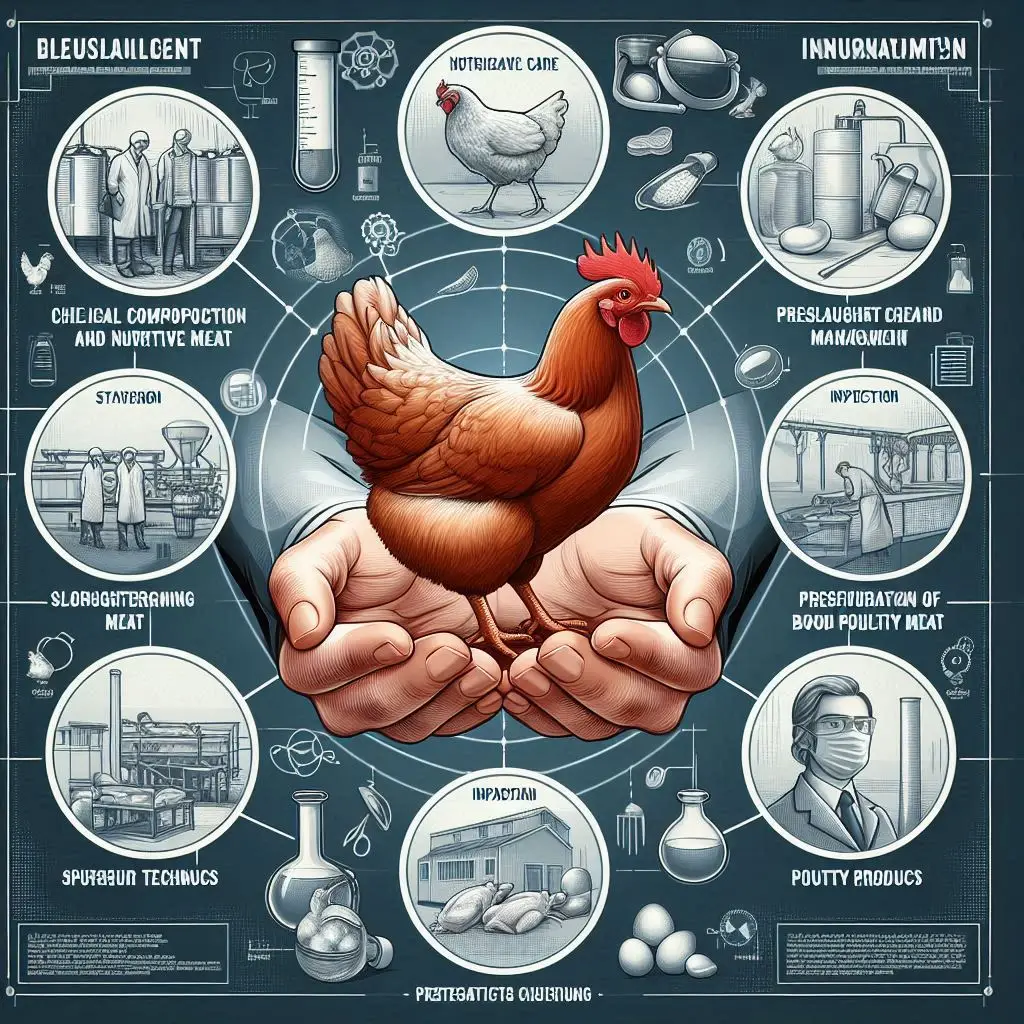Understanding Pre-Slaughter Care and Slaughtering Techniques

Introduction
The meat production process involves several critical stages, including pre-slaughter care, slaughtering techniques, and inspection. Each stage plays a vital role in ensuring animal welfare, meat quality, and food safety. This article will provide an in-depth look at these components, emphasizing best practices and their importance in the meat industry.
Importance of Pre-Slaughter Care
Ensuring Animal Welfare
Pre-slaughter care focuses on the well-being of animals before they are processed. Key aspects include:
- Health Monitoring: Regular health checks are essential. Sick or injured animals should be identified and separated to prevent them from entering the food supply.
- Stress Reduction: Minimizing stress is crucial. Animals should be handled gently and transported in a way that avoids overcrowding. This care helps maintain meat quality.
Proper Feeding and Hydration
- Nutrition: Animals should receive a balanced diet leading up to slaughter. Proper nutrition supports their health and improves meat quality.
- Hydration: Access to clean water is vital. Dehydrated animals can experience stress, which negatively affects meat quality.
Effective Slaughtering Techniques
Stunning Methods
Stunning is a critical step in the slaughter process. It ensures that animals do not experience pain during slaughter. Common stunning methods include:
- Electrical Stunning: This method uses an electric current to render the animal unconscious. It is quick and effective when performed correctly.
- Captive Bolt Stunning: A mechanical device delivers a swift blow to the animal’s head, causing immediate unconsciousness.
Bleeding Process
After stunning, the animal is typically hung and bled out. This step is crucial for meat quality. Proper bleeding ensures that the blood is drained from the carcass, which helps prevent spoilage and improves flavor.
Post-Mortem Inspection
After slaughter, a thorough inspection is conducted to ensure the meat is safe for consumption. This involves:
- Visual Inspection: Inspectors examine the carcass for signs of disease or abnormalities.
- Organ Inspection: Internal organs are also checked for any health issues that could affect meat quality.
Rigorous Inspection Processes
Ante-Mortem Inspection
Before slaughter, animals undergo an ante-mortem inspection. This step is essential for identifying any health issues. Inspectors look for:
- Signs of Illness: Any visible signs of disease or distress are noted.
- Behavioral Assessment: Animals showing unusual behavior may need further evaluation.
Post-Mortem Inspection
After slaughter, the post-mortem inspection is vital for food safety. Inspectors check for:
- Diseased Organs: Organs are examined for any signs of disease, such as tumors or infections.
- Carcass Quality: The overall quality of the carcass is assessed to ensure it meets safety standards.
Regulatory Compliance
All inspection processes must comply with national and international regulations. Organizations like the Food and Agriculture Organization (FAO) and the World Health Organization (WHO) set these standards to ensure meat safety.
Best Practices for Pre-Slaughter Care and Management
Training Staff
Proper training for staff involved in handling and slaughtering animals is crucial. Staff should understand:
- Animal Behavior: Knowledge of animal behavior helps reduce stress during handling.
- Humane Practices: Training in humane handling and stunning techniques ensures compliance with welfare standards.
Record Keeping
Maintaining accurate records is essential for tracking animal health and welfare. Key records include:
- Health Records: Documenting any health issues helps identify trends and improve management practices.
- Transport Records: Keeping track of transport conditions ensures that animals are treated humanely throughout the process.
Conclusion
Pre-slaughter care, effective slaughtering techniques, and rigorous inspection processes are fundamental to ensuring animal welfare and meat safety. By prioritizing these aspects, the meat industry can produce high-quality products while maintaining ethical standards. Implementing best practices in each stage of the process not only benefits animals but also enhances consumer trust in meat products.
For more pearls of Vets Wisdom:
https://wiseias.com/partitioning-of-food-energy-within-animals/






Responses